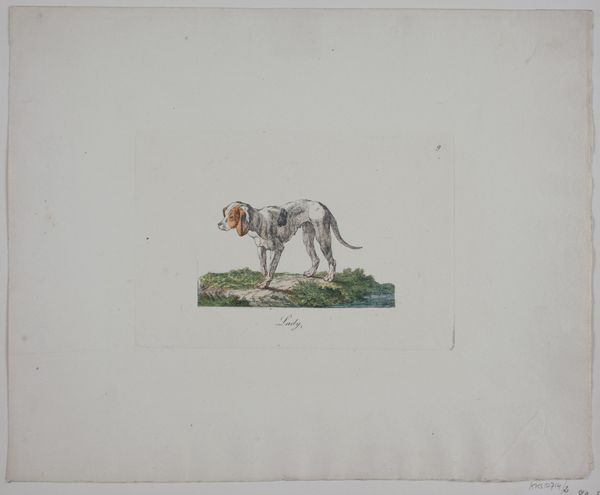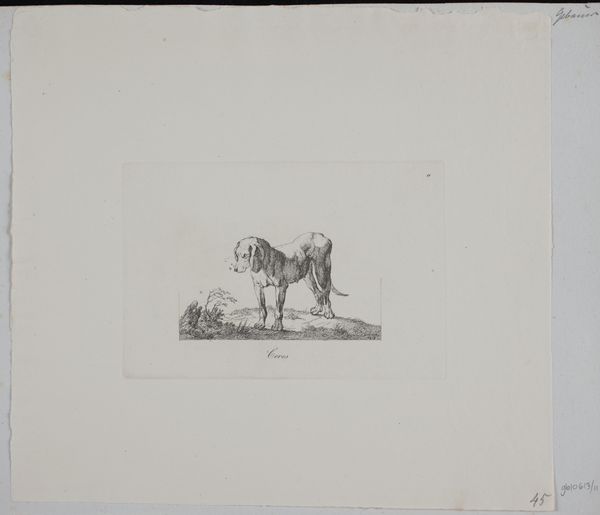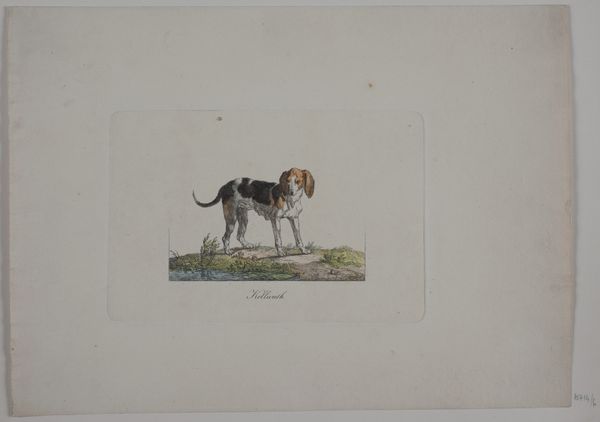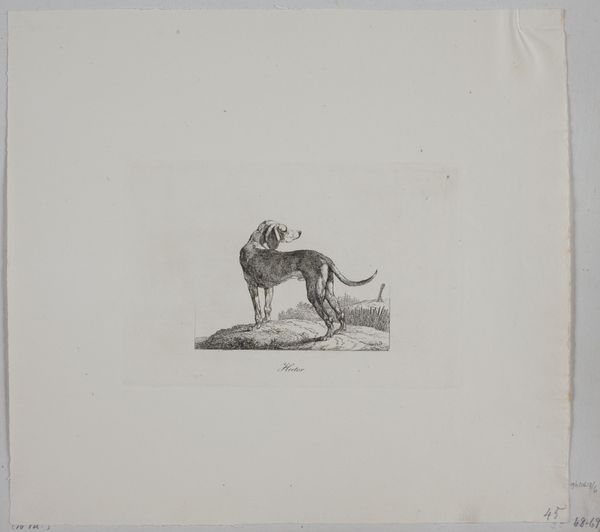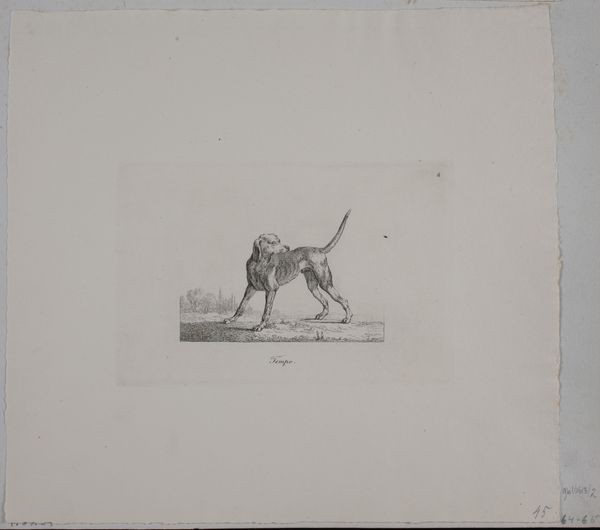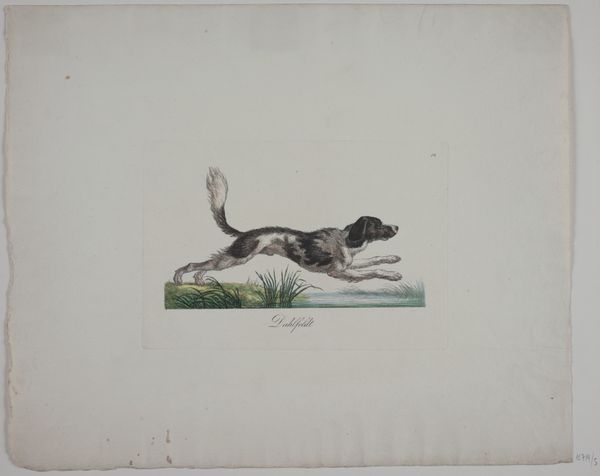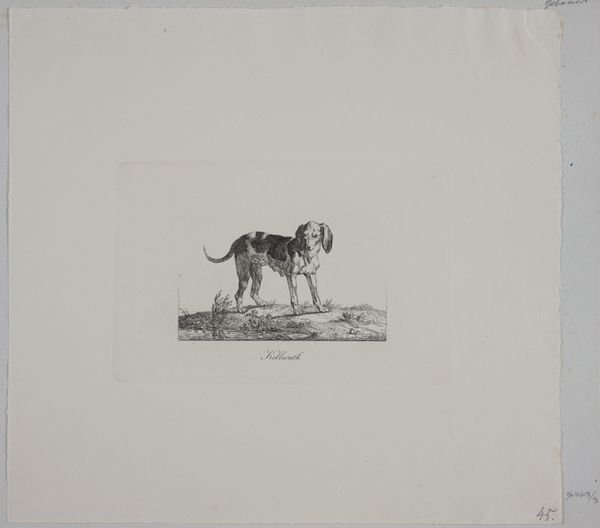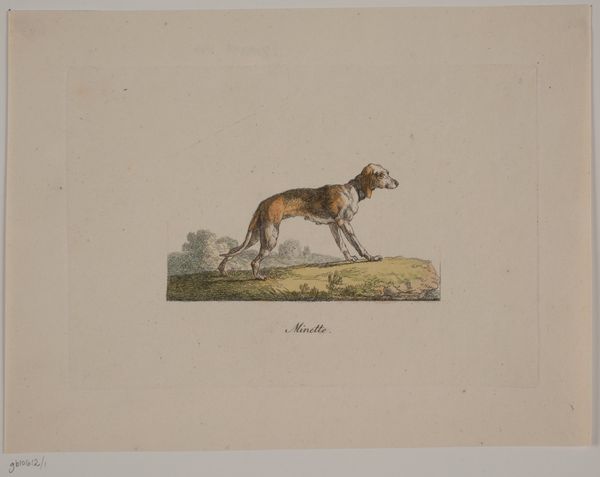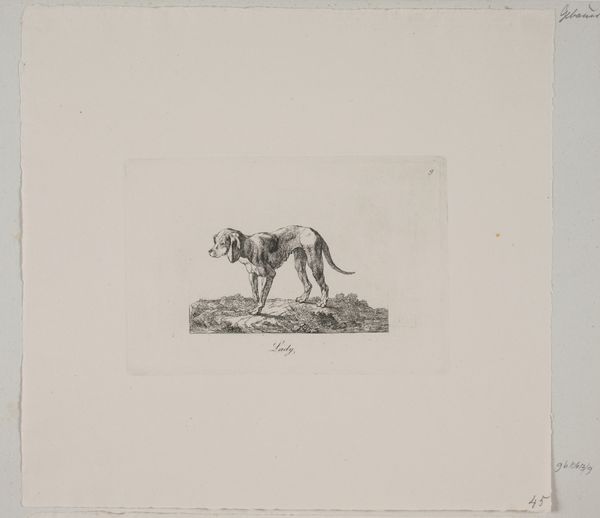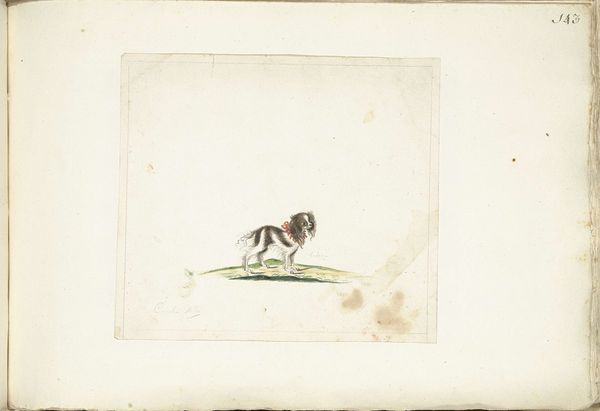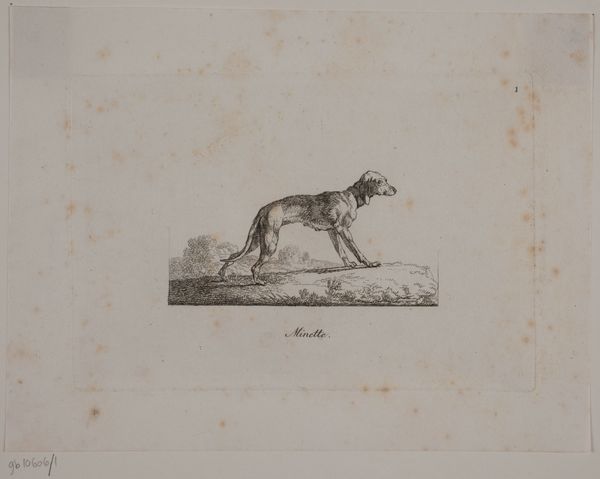
drawing, paper, watercolor, pencil
#
portrait
#
drawing
#
water colours
#
animal
#
landscape
#
paper
#
watercolor
#
romanticism
#
pencil
#
mixed medium
#
watercolor
#
realism
Dimensions: 152 mm (height) x 199 mm (width) (plademaal)
Editor: So, this is "Ceres," a watercolor and pencil drawing by Christian David Gebauer, created around 1821. I'm struck by its simplicity; it's a lone dog rendered with delicate washes of color. What do you see in this piece? Curator: I’m drawn to the physical elements, the "how" of its making. Look at the paper itself: what kind is it? The materiality informs the artistic decision. Its probable origin in specific factories speaks to broader networks of trade and resource extraction in the 19th century. Think also about the pencils used. Who manufactured them and how accessible were these tools? Editor: That’s interesting! I was focusing on the subject, the dog, but you’re making me consider the *materials* as having their own history. Does the choice of watercolor have something to do with that as well? Curator: Precisely! Consider the qualities of watercolor itself— its relative portability made it very suitable for travel and outdoor sketching, increasingly common amongst a rising middle class. Its use might signal an aspiration toward, or a participation in, certain social practices associated with leisure and nature. Editor: So, Gebauer’s choice of these relatively accessible materials changes how we view the artwork? Curator: Exactly! Instead of focusing on the aesthetic representation, we are impelled to investigate the social and economic realities of artistic production in early 19th century Denmark. It connects us to the broader world. Editor: That makes so much sense! I wouldn’t have thought about it that way initially, but it really does add layers of meaning to what initially seems like a simple portrait. Curator: Thinking about art this way, emphasizing production and context, forces us to question our traditional definitions of "high art," no? Editor: Definitely, seeing art as connected to production, class, and even global trade makes it far more engaging and relevant. Thanks!
Comments
No comments
Be the first to comment and join the conversation on the ultimate creative platform.
